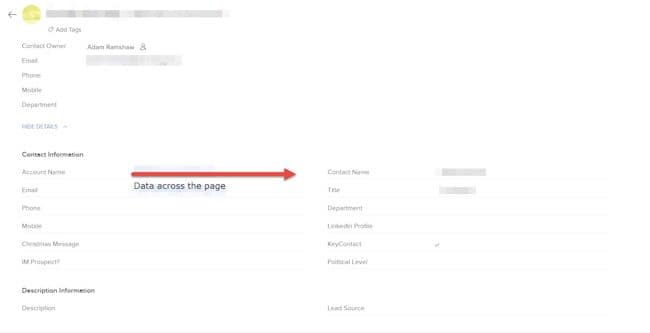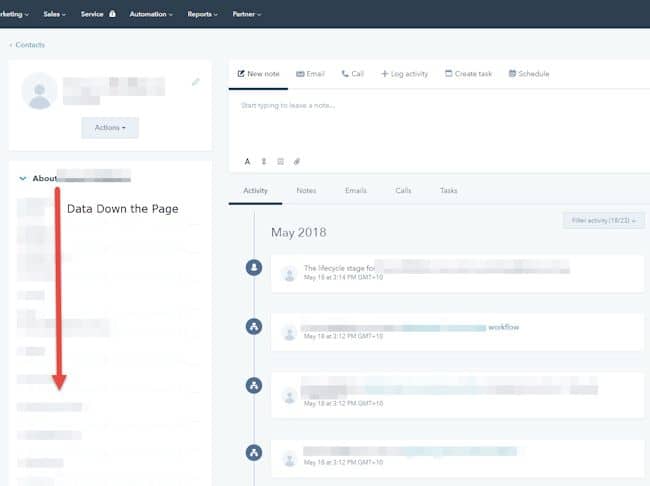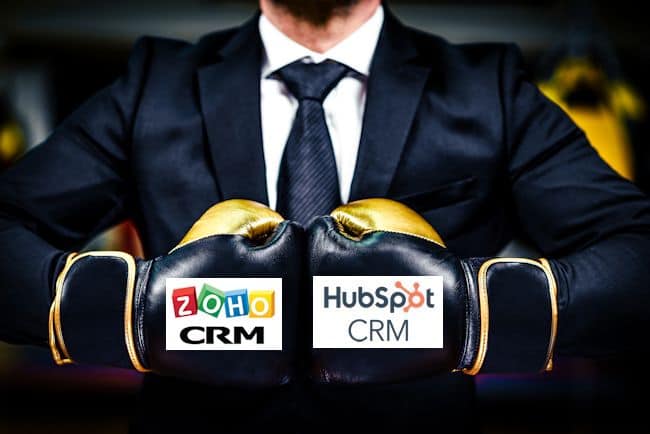In the search for the right Sales CRM, there are lots of options. In a recent post, I did a detailed HubSpot CRM review but here I’ll look at comparing Zoho Vs HubSpot CRMs.
HubSpot CRM and Zoho CRM are both good products, applicable to a range of mid-tier organisations. They provide an extensive range of features but at the free level, HubSpot CRM has the edge over Zoho in some key inclusions: user count, email integration, meeting scheduling, custom fields, task reminders and ease of use.
We’ve been using the Zoho CRM for a few years but made the switch over to HubSpot CRM a few months ago. So I’ve worked with both platforms and know them pretty well.
This post will compare the products as an active user. It will cover areas you only find out about after using a system for a few weeks or months.
Good Points About Both systems
Both CRMs are effective sales management tools that handle the standard features pretty well:
- Recording and managing sales contacts
- Taking notes and tracking conversations
- Tracking sales opportunities
- Creating alerts to remind you to re-contact people
At different price points they also start to include more advanced features
- Initiate and manage web chat sessions
- Directly collect prospect information via web forms
- Track who has visited your website
Ease of setup
With CRM’s getting more sophisticated, a simple interface is crucial.
Both of these systems are relatively simple to set up and understand. Adding customer fields, changing views and similar administration tasks are relatively straightforward.
Third Party Tool Integration
Both systems offer a range of third party tool integrations to add specific functionality.
The ones I see the most value in are:
Pandadoc
Even though both Zoho and HubSpot offer proposal tools you’re unlikely to use them. They’re clunky, hard to customise just not that great. On the other hand by integrating with PandaDoc’s all-in-one document automation software you can streamline the process to create, approve, and eSign proposals. Pandadoc even offers online document notarization services in Florida and across the rest of the US.
LinkedIn Sales Navigator
While LinkedIn Sales Navigator is a great tool – it’s owned by Microsoft and deep (proper) integration is only possible with either the Microsoft Dynamics or Salesforce sales tools. However, both Zoho and HubSpot have created “okay” integrations that allow for easier searching and linking to Sales Navigator data.
Not so Good Points About each System
Leads Vs Contacts in Zoho is a problem
Zoho has two separate data types for “contact”: Leads and Contacts. Leads are for people that don’t yet meet your lead score for a Contact. But at some point, you convert Leads to Contacts.
This doesn’t sound like such a problem but in practice it is because:
- Other system features are built against the specific data type.
- The same person can be entered as a Lead and a Contact (very annoying)
- Different data structures
On the data type front: when you build an email template, for instance, you must associate it with just one data type – Lead or Contact.
If you have a template that works for both Leads and Contacts, you have to build and maintain the template twice. The same goes for custom reports and a range of other features.
Leads and Contacts can also have different data structures. You must create consistent data structures and rules to makes sure data moves from one contact type to the other when you “convert” a Lead to a Contact.
In summary, the difference between the two types of “contact” data is arbitrary and causes problems down the line.
In HubSpot there is just one “contact” data type. Leads and Contacts are only defined, if you want them to be, by a property value.
ZoHo features can be disjointed
While the ZoHo feature set is rich, it is a little disjointed.
It seems like different groups are working on different areas and they don’t always match up neatly. This means it can be confusing to get all the elements set up.
For instance, their SalesSignals feature tracks people while they are on a website, similar to the HubSpot Prospects tool. It’s a nice feature but there is a whole separate registration and payment process.
HubSpot CRM presents data down the page not across
When you’re in and out of customer records all day, seeing the data you need quickly and above the fold is very important.
Zoho and HubSpot lay their data out in opposite ways. Zoho’s is better.
HubSpot contact details are spread down the page and Zoho are across the page. The across the page format works a lot better for quickly getting the data you need.
While you can re-order the data in both systems, it’s more difficult to get the key data (name, email, company, title, email and phone) “above the fold” in HubSpot, meaning you more often need to scroll to see one or other detail.


ZoHo Free Vs HubSpot CRM Free – Which is Best?
HubSpot have really ramped up the arms race in terms of free functionality for a CRM.
As I’ve noted before the HubSpot CRM can be used by many small organisations as a real, live, useful CRM, not a paywall crippled imitation.
Below is a detailed side-by-side comparison of the feature sets but the important differences are:
Users
HubSpot allows you as many users as you need. Zoho is limited to 3.
Role Authority
With Zoho, everyone is a Super Admin: this is kind of a problem.
In a small company you probably trust everyone but a SuperAdmin can do a lot of damage when used by inexperienced or junior staff.
HubSpot gives more fine grained control over who can do what.
Gmail/Outlook Integration is included in HubSpot
Email integrations with HubSpot can streamline several processes.
The ability to directly link your email account to the CRM is very useful and keeps the data in both places, your email application and CRM customer record. HubSpot does this well and the more you use this feature the more you will like it.
This is not included in the Zoho free edition.
Meeting Scheduling is included in HubSpot
When I first started using this feature I figured almost no-one would use it to book meetings but to my surprise they do. Even in the initial prospecting stage, people will use the link to book a time to call.
Not only is this a time saver (in the meeting run around game we all play) but having this free in HubSpot saves the need to pay for it elsewhere (a $50 plus saving per month) and run a separate integration.
Plus, when they fill it out you can track their viewing of your website. This is pretty nice as you’re able to see when they’ve looked at your pricing page…
Custom fields excluded for Zoho
Excluded in the base Zoho platform and this is an issue. Every business will have a few contact properties that are specific to their business or industry.
This is probably a show stopper for most organisations. It means you have to immediately upgrade to a paid license of some type.
Task Reminders not included for ZoHo
The user interface for the HubSpot Reminder feature is slick and the feature is not available in ZoHo CRM free.
The number of keystrokes/clicks to set a reminder against a common sales task (end of call, after email send, etc) is many fewer than the Zoho equivalent.
HubSpot also auto-suggests a number of business days (not calendar days) into the future.






